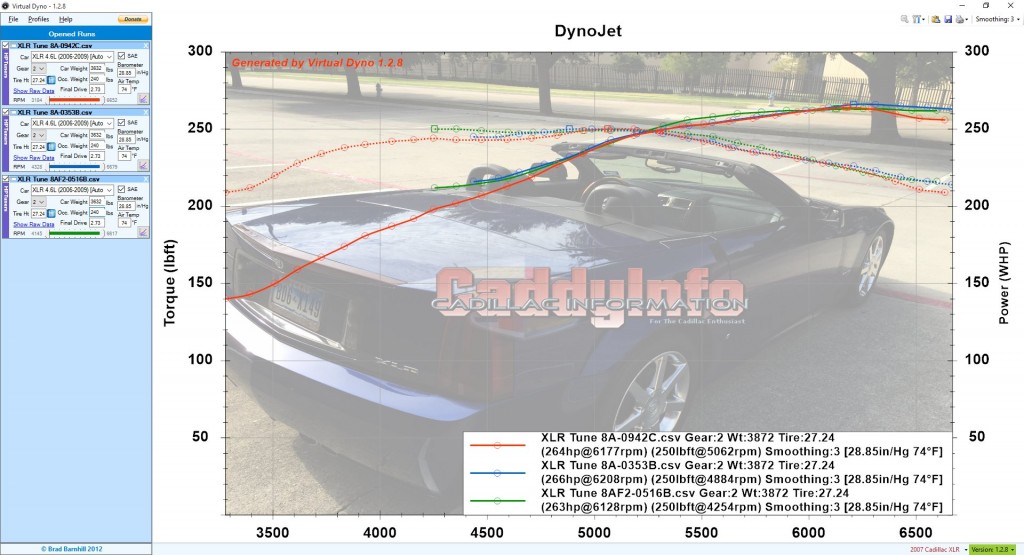Tonight I had cooler weather so I re-tested Tune 9a for baseline comparison.
The 9A2 runs showed some KR spikes at 4150 rpm and 5000 RPM. This appears to relate to a high IAT advance multiplier at those RPMs, which I will zero out for Tune 9B.
The Virtual Dyno for 9a2 was equivalent to 9a1, which is good news (same tune, different day).
Tune 9B will also reapply the MAF 2% touch up around 8,000 hz since there are some signs of running lean there.
The issue of KR due to multiplied IAT advance at lower temps could be why the XLR has consistently run better at high temps (which is counter-intuitive). In the next tune I will change the multipliers below 6000 RPM/below 104F for IAT advance to 0. The alternative would be to zero out IAT advance adders at cooler temps, but there may be some value in keeping them at higher RPMs.
Because the KR doesn’t go up at higher RPM it may be false knock?











